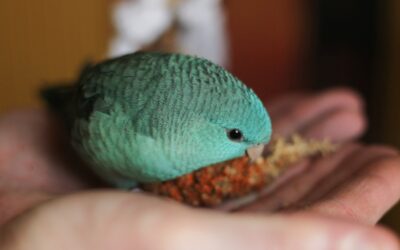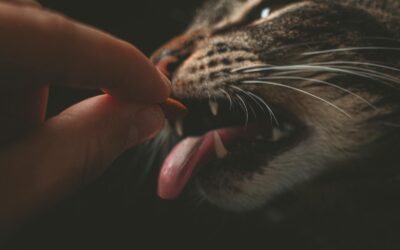How many teeth do dogs have?
Dogs are known for their playful demeanor and boundless energy, but have you ever wondered about the dental dynamics behind those wagging tails and slobbery kisses? Understanding our beloved canine companions involves more than just knowing what food they like or the best toys to keep them entertained; it extends to their dental health. This blog aims to shed light on dog dental care, especially focusing on how many teeth dogs have compared to humans and how to maintain them.

The Basics of Canine Teeth
Dogs, like humans, have two sets of teeth in their lifetime. Puppies are born with baby teeth, or “deciduous teeth,” which eventually dogs lose teeth to make way for adult teeth. But do dogs have more teeth than humans?
Understanding Baby Teeth
Puppy teeth, often referred to as “milk teeth,” begin to emerge at around three weeks of age. Puppies typically have 28 baby teeth. These small teeth are extremely sharp teeth located behind, allowing puppies to begin exploring their world and preparing for solid food.
The Transition to Adult Teeth
Around four months of age, puppies start losing their baby teeth to be replaced by permanent adult teeth. Adult dogs have 42 teeth, which is quite a few more than the average human, who has 32. These teeth are essential for chewing, and canine teeth tear food, and playing.
Dogs’ teeth are categorized into incisors, canines, premolars, and molars. Each type has a specific function, similar to human teeth, but adapted to a dog’s diet and lifestyle. Understanding these differences can help pet owners provide better care for their pets.

Why Dogs Have Different Types of Teeth
Each type of tooth in a dog’s mouth serves a unique purpose. Recognizing these can lead to better dental care practices.
Incisors for Nibbling
The incisors are the small teeth at the front of your dog’s mouth, used primarily for nibbling and grooming. Dogs have twelve incisors, six on the top and six on the lower jaw.
Canine Teeth for Gripping and Tearing
Canine teeth are the iconic fangs that give canines their name. These are used for gripping and tearing food and objects. Dogs have four canines, two on the top jaw and two on the bottom.
Premolars for Chewing
Premolars are located behind the canines. Dogs have sixteen premolars, used for chewing and grinding food. They’re crucial for breaking down food into manageable pieces.
Molars for Grinding
Molars are found at the back of a dog’s mouth. Dogs have ten molars, which help in grinding tougher food items. These teeth are particularly important for dogs that consume a kibble-based diet.

The Importance of Dental Health in Dogs
A dog’s dental health is a vital part of their overall well-being. Just as humans need to care for their teeth, so do dogs.
Preventing Tooth Decay and Disease
Poor dental hygiene can lead to tooth decay and periodontal disease in dogs. These conditions can cause pain, bad breath, and even lead to more serious health issues if bacteria enter the bloodstream.
Understanding Periodontal Disease
Periodontal disease is the inflammation and infection of the gums and bones surrounding the teeth. It’s one of the most common dental problems in adult dogs and can lead to tooth loss if not treated.
Signs of Dental Problems
Common signs of dental issues in dogs include bad breath, loose or wiggly teeth, discolored teeth, and swelling around the mouth. If you notice any of these symptoms, it’s important to consult a veterinarian.

How to Care for Your Dog’s Teeth
Maintaining DOG TEETH doesn’t have to be a daunting task. With regular care and attention, you can prevent many common dental problems.
Daily Brushing
Brushing your dog’s teeth daily is one of the most effective ways to prevent dental disease. Use a toothbrush designed for dogs and dog-specific toothpaste, as human toothpaste can be harmful to dogs.
Dental Chews and Toys
Dental chews and toys can help reduce plaque and tartar buildup. Choose products designed for dental health and suited to your dog’s size and chewing habits.
Regular Veterinary Check-Ups
Regular dental check-ups at the vet are essential. During these visits, your vet will examine your dog’s teeth and gums and may recommend professional cleaning if necessary.

Top Dental Treats and Products for Dogs
Maintaining your dog’s dental health can be made easier with the right products. Here are six top dental treats and products recommended for promoting oral hygiene in dogs:
Greenies Original Dental Treats
These soft, chewy treats help reduce plaque and tartar buildup while freshening your dog’s breath.
Virbac C.E.T. Enzymatic Dog Toothpaste
A vet-recommended toothpaste that helps control plaque and maintain healthy gums, available in various flavors.
Nylabone DuraChew Textured Dog Chew
This durable chew toy is designed to satisfy your dog’s natural chewing instinct while promoting dental health.
Purina Pro Plan Dental Health Adult Dog Food
Formulated with a unique kibble to help reduce plaque and tartar as your dog chews.
PetIQ Fresh Dental Chews
These dental chews help fight plaque and tartar while ensuring fresh breath, with a natural formula.
Burt’s Bees for Dogs Natural Dental Chew
A natural dental chew that uses ingredients like peppermint oil to freshen breath and promote oral health.
Incorporating these products into your dog’s routine can significantly enhance their dental health and overall well-being.

The Role of Diet in Dental Health
Your dog’s diet plays a crucial role in maintaining healthy teeth and gums.
Choosing the Right Food
Feeding your dog a balanced diet with the right nutrients supports overall health, including dental health. Some dog foods are specifically formulated to reduce plaque buildup.
Avoiding Harmful Foods
Certain foods can be harmful to your dog’s teeth. Avoid giving your dog bones, as they can cause tooth damage, and sugary treats, which can contribute to dog teeth decay.
The Benefits of Raw Diets
Some pet owners opt for raw diets, which can be beneficial for dental health because they encourage chewing and naturally clean the teeth.
Common Myths About Dog Dental Care
There are many misconceptions about dog dental care that can lead to poor practices.
Myth 1: Dental Care Isn’t Necessary
Some people believe that dogs don’t need dental care because they don’t naturally brush their teeth. However, domestic dogs often don’t chew and clean their teeth as wild dogs might, making dental care necessary.
Myth 2: Bad Breath Is Normal
While some doggie breath is normal, persistent bad breath can be a sign of dental disease and shouldn’t be ignored.
Myth 3: Dry Food Cleans Teeth
While dry food can help remove some plaque, it’s not a substitute for regular brushing and professional cleanings.
Understanding Dog Body Language and Oral Health
A dog’s body language can give clues about their health, including dental issues.
Signs of Mouth Pain
If your dog is pawing at their mouth, drooling excessively, or refusing food, it could indicate oral pain. Observe these behaviors and consult a vet for advice.
Changes in Eating Habits
Dogs with dental problems may change their eating habits, such as chewing on one side of the mouth or avoiding hard foods.
Behavioral Changes
Dental pain can lead to behavioral changes, such as irritability or lethargy. Keep an eye on your dog’s usual behavior and seek veterinary advice if you notice changes.

Advanced Dental Care for Dogs
For some dogs, basic dental care isn’t enough, and advanced treatments might be necessary.
Veterinary Cleanings
Professional dental cleanings involve a thorough examination and cleaning under anesthesia. This process removes plaque and tartar that can’t be addressed with home care alone.
Treatments for Tooth Decay
If your dog develops tooth decay, a vet may need to fill or remove the affected tooth to prevent further damage and pain.
Addressing Gum Disease
Gum disease requires professional intervention. Treatments may include cleaning, medication, or surgery, depending on the severity.
Tips for Maintaining Dental Health in Small Breed Dogs
Small breed dogs are particularly prone to dental issues due to the size and shape of their mouths.
Regular Dental Care
Small breed dogs often require more frequent dental care to prevent tooth decay and periodontal disease. Be diligent with brushing and vet check-ups.
Choosing the Right Products
Use dental products designed for small mouths, including appropriately sized toothbrushes and chews.
Monitoring Dental Health Closely
Small breed dogs should have their dental health monitored closely. Regularly check for signs of dental issues and consult your vet as needed.

Kate’s K9 Pet Care can deliver dental treats to your door same day. Contact us and visit our website.
Conclusion | How Many Teeth Do Dogs Have?
In summary, a dog’s dental health is an essential aspect of their overall well-being. With 42 adult teeth, dogs rely on their owners to maintain proper dental care to prevent decay and disease. By understanding the structure and function of your dog’s teeth, providing regular dental care, and being proactive in addressing any issues, you can ensure your furry friend remains healthy and happy. For more information and resources on dog dental care, consult your veterinarian or explore specialized pet dental products.







